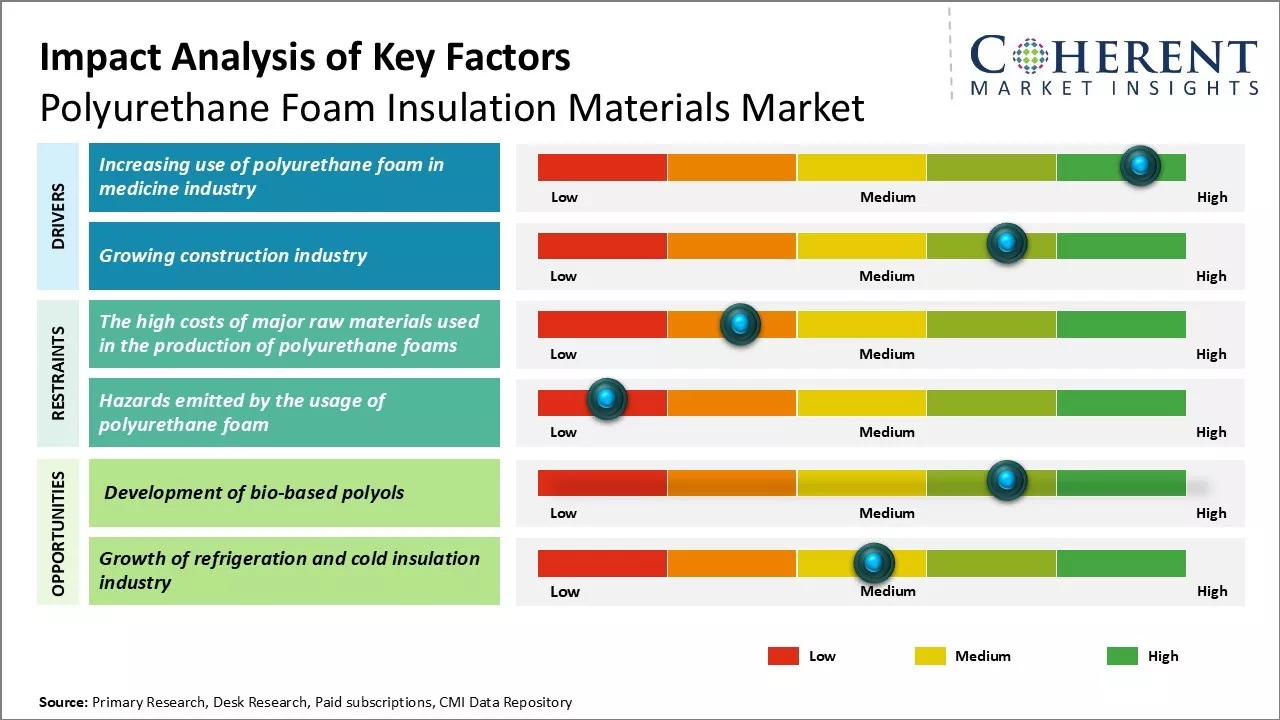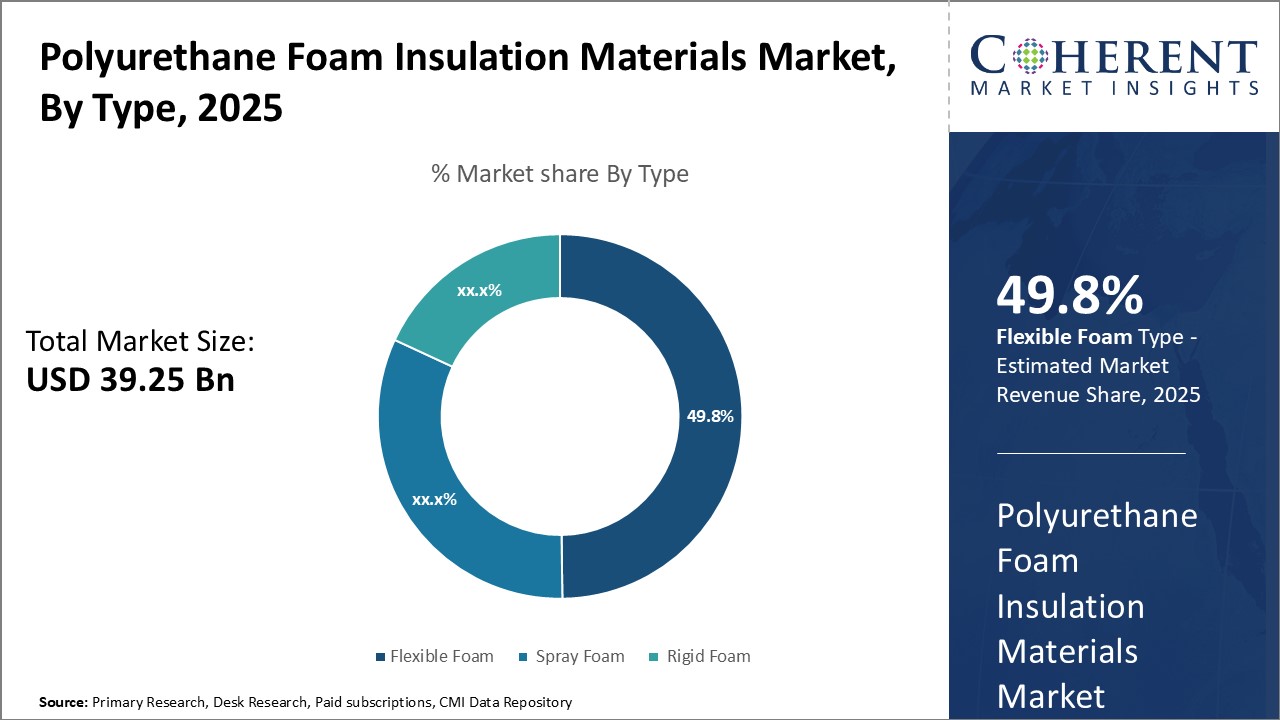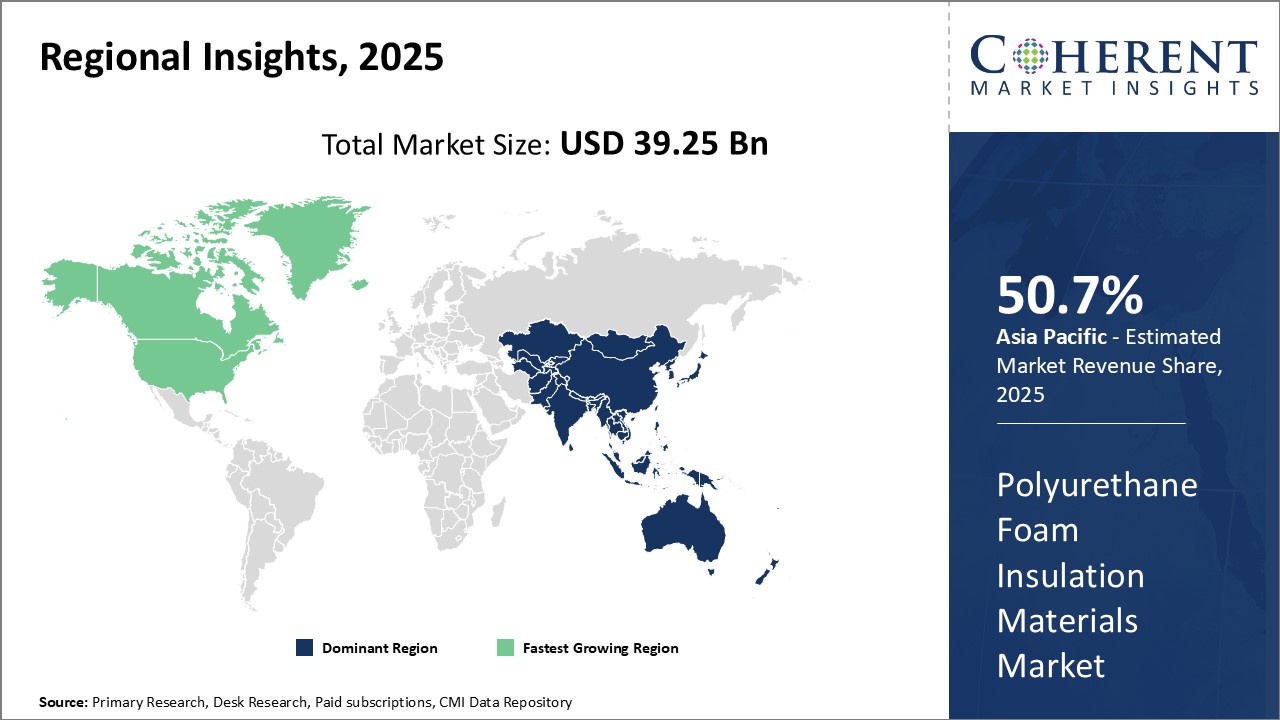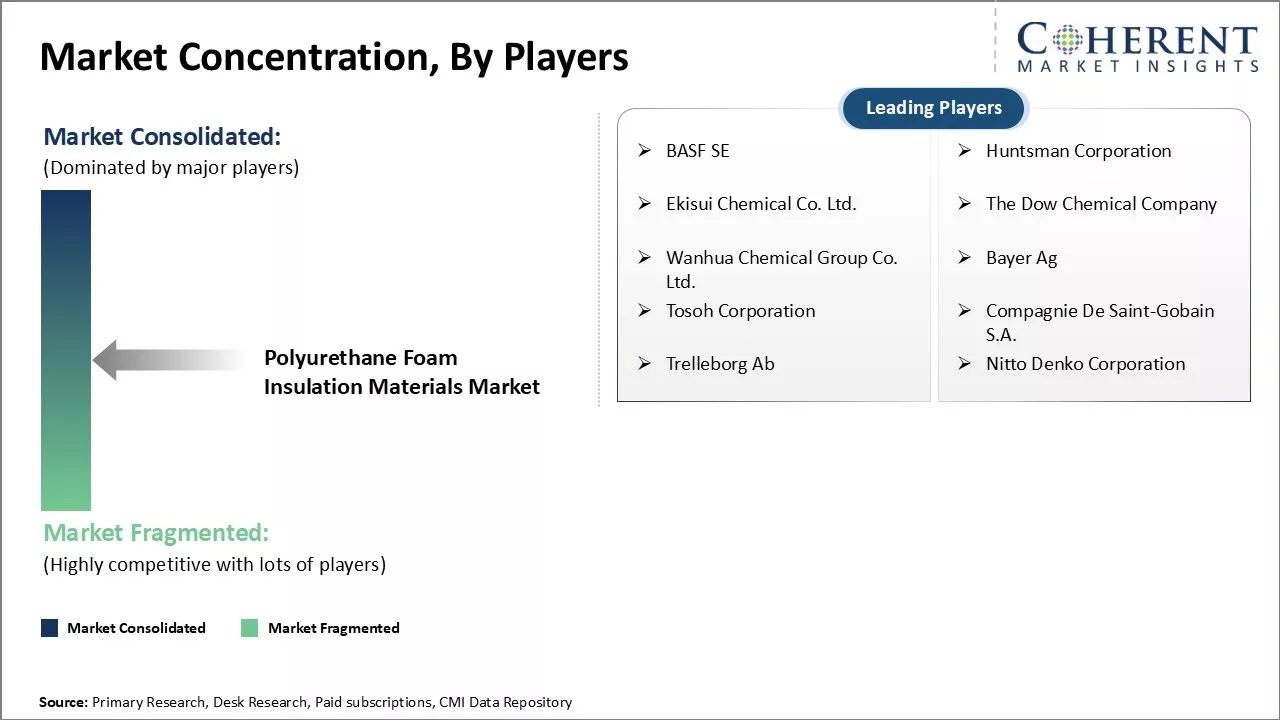Polyurethane foam insulation materials market is estimated to be valued at USD 39.25 Bn in 2025 and is expected to reach USD 56.76 Bn by 2032, exhibiting a compound annual growth rate (CAGR) of 5.4% from 2025 to 2032. The market for polyurethane foam insulation materials has been witnessing significant growth over the past few years owing to the rising construction activities and increasing need for thermal insulation in buildings.

Discover market dynamics shaping the industry: Download Free Sample
Polyurethane foam insulation provides various advantages such as high insulation capacity, low density, easy application, and minimal environmental impact. Its growing usage in various end-use industries like construction, packaging, automotive, and electronics has been contributing to the positive growth trend of this market. Rapid urbanization and industrialization in emerging economies have further augmented the demand for polyurethane foam insulation.

Discover high revenue pocket segments and roadmap to it: Download Free Sample
Insights by Type: - Advantages of Flexible Foam
In terms of type, flexible foam segment is estimated to hold the highest market share of 49.8% in 2025 of the polyurethane foam insulation materials market owing to its versatility and customizability. Flexible foam can be easily molded into many shapes and sizes, allowing it to conform to irregular surfaces and fill gaps or crevices efficiently. This makes it an excellent choice for applications requiring form-fitting insulation like fitting piping, sealing air ducts, and insulating vehicle doors and flooring.
Flexible foam also provides good insulation performance relative to its weight. Many polyurethane flexible foams offer R-values exceeding R-4 per inch, helping to effectively insulate against heat transfer. Their closed-cell structure traps small pockets of gas like carbon dioxide or nitrogen very effectively, acting as an insulating barrier. This high performance in a lightweight material expands flexible foam's usable applications.
Insights by Application: - Building & Construction - The Primary Market for Polyurethane Foam Insulation
In terms of application, building & constructions segment is estimated to hold the highest market share of 38.9% in 2025 of the polyurethane foam insulation materials market. This is due to foams' widespread usage throughout the construction industry for both residential and commercial applications. Polyurethane foams offer multiple benefits that make them well-suited for construction insulation needs.
Flexible foams conform well for sealing heating, ventilation, and air conditioning HVAC or plumbing openings. Together, these traits lower long-term costs through reduced labor and faster project completion.
Stringent building codes in many regions mandate high R-value insulation to minimize energy consumption and lower owners' utility bills. Polyurethane foams satisfy or exceed codes thanks to inherent high performance. This regulatory support contributes significantly to their popularity in construction applications.

Need a Different Region or Segment? Download Free Sample
Regional Analysis: Polyurethane Foam Insulation Materials Market
Dominating Region: Asia Pacific
Asia Pacific dominates the Polyurethane foam insulation materials market, with an estimated market share of 50.7% in 2025, due to stringent building energy codes and widespread consumer awareness about energy-efficient solutions. Government initiatives such as International Finance Corporation to promote green building practices and reduce reliance on fossil fuels have boosted market growth. Major players in the region have benefited from the thriving construction industry and established distribution networks.
Fastest-Growing Region: North America
The North America exhibits the fastest growth riding on the rapidly developing construction sectors across emerging economies. Growing middle-class populations and rising disposable incomes are driving demand for insulation in residential and commercial construction. Local manufacturers are expanding production capacities to cater to the burgeoning requirements.
Polyurethane Foam Insulation Materials Market Outlook for Key Countries
U.S.: The U.S. market is characterized by product innovation and consolidation activities among top players. Leading companies are focusing on developing advanced thermal insulation solutions for the HVAC and industrial sectors.
China: China 's market remains largest globally, supported by strong infrastructure spending and the 'One Belt One Road' initiative expanding trade partnerships. Both international and domestic brands are targeting high-growth tier 2 and 3 cities.
Germany: Germany continues to lead the European market through stringent EU energy efficiency norms. Investments in research facilities are helping companies’ rollout customized product portfolio.
India: India 's market is witnessing healthy growth on the back of government plans to boost per capita housing and invest in industrialization. Local and global players are enhancing manufacturing footprints in the country.

Get actionable strategies to beat competition: Download Free Sample
Top Strategies Followed by Polyurethane Foam Insulation Materials Market Players
Established Players: R&D Investment
Leading companies in the polyurethane foam insulation materials market focus extensively on research and development to innovate high-performance products. For instance, major players like BASF and Dow Chemical invest over 5% of their annual revenue in R&D. They consistently work to develop enhanced foam formulations with improved insulation capabilities, sustainability, and fire resistance. This allows them to launch differentiated products and maintain an edge over competitors.
Mid-Level Players: Cost-Effective Solutions
Mid-sized companies aim to deliver quality, budget-friendly products targeting price-sensitive segments. They adapt innovative manufacturing techniques to optimize production costs. For example, some players partner with local raw material suppliers to secure affordable inputs. Others focus on automation and process optimization to reduce labor expenses. This helps mid-level players offer competitively priced insulation solutions without compromising on quality. They mainly attract consumers looking for value-for-money purchases.
Small-Scale Players: Niche Specialization
Small manufacturers and startups leverage niche specialization as a key strategy. They intimately understand the unique needs of specialized application areas like construction, industrial equipment, and automotive. This allows these companies to develop customized foam grades with enhanced performance attributes tailored to the demands of niche markets. Their specialized product portfolio targeting distinct customer groups helps gain a foothold even in a highly competitive industry landscape.
Emerging Startups in the Polyurethane Foam Insulation Materials Market
Innovative Technologies
Several startups are developing advanced technologies to disrupt the industry. Companies like Kureha and Bast Fiber Technologies are innovating with smart sensors embedded in foam panels. These sensors can monitor temperature, moisture, motion, and other parameters, enabling IoT-based insulation solutions. Their global expansion plans aim to introduce these intelligent insulation systems that analyze performance and enable predictive maintenance of buildings and infrastructure. Such next-gen technologies have the potential to transform existing market dynamics over the coming decade.
Sustainable Solutions
Sustainability-focused startups offer eco-friendly alternatives. For instance, Biobased Technologies manufactures spray polyurethane foam entirely from plant-based materials, eliminating non-renewable resource dependence. Minnesota-based Regain utilizes post-consumer foam waste to produce new insulation panels through advanced recycling. Their offerings help reduce industry's carbon footprint and cater to growing consumer demand for green products.
Key Takeaways from Analyst
Polyurethane Foam Insulation Materials Market Report Coverage
| Report Coverage | Details | ||
|---|---|---|---|
| Base Year: | 2024 | Market Size in 2025: | USD 39.25 Bn |
| Historical Data for: | 2020 To 2024 | Forecast Period: | 2025 To 2032 |
| Forecast Period 2025 to 2032 CAGR: | 5.4% | 2032 Value Projection: | USD 56.76 Bn |
| Geographies covered: |
|
||
| Segments covered: |
|
||
| Companies covered: |
BASF SE, Huntsman Corporation, Ekisui Chemical Co. Ltd., The Dow Chemical Company, Wanhua Chemical Group Co. Ltd., Bayer Ag, Tosoh Corporation, Compagnie De Saint-Gobain S.A., Trelleborg Ab, and Nitto Denko Corporation |
||
| Growth Drivers: |
|
||
| Restraints & Challenges: |
|
||
Uncover macros and micros vetted on 75+ parameters: Get instant access to report
Market Driver - Increasing use of polyurethane foam in medicine industry
One of the major drivers for the growth of this market is the increasing use of polyurethanes in the medical industry. Polyurethane foam is increasingly being used by the medical industry due to its lightweight yet durable nature which makes it suitable for various medical applications such as patient support and comfort.
The rise in aging population across the world suffering from mobility issues is driving the demand for advanced medical devices made from polyurethane foam. For instance, data released on October 2024, According to World Health Organization (WHO) data, the number of people aged 60 years and above is expected to increase from 12% to 22% of the global population between 2015 and 2050. Orthopedic implants and braces manufactured using polyurethane foam provide comfort and mobility support to elderly.
Market Challenge - The high costs of major raw materials used in the production of polyurethane foams
One of the key challenges faced by the polyurethane foam insulation materials market is the high costs of major raw materials used in the production of polyurethane foams. The costs of key raw materials like toluene diisocyanate (TDI) and polyether polyols have increased significantly over the last few years owing to rising crude oil prices and tight supply constraints. This has driven up production costs for manufacturers. As polyurethane foams are a petroleum-based product, manufacturers have little control over fluctuating raw material costs. For instance, January 2021, according to the US Energy Information Administration, the average price of crude oil increased from US$61 per barrel in 2020 to over US$77 per barrel in 2022. This has directly impacted production costs for foam manufacturers. The costs of other essential inputs such as blowing agents that are needed for the foaming process have also risen sharply.
Market Opportunity - Development of Bio-Based Polyols
One of the key opportunities for the polyurethane foam insulation materials market is the development of bio-based polyols. With growing sustainability focus, manufacturers are exploring opportunities to replace petroleum-derived polyols with bio-based alternatives. The use of bio-polyols obtained from natural oils including soybean, palm, and castor oil is gaining traction as it helps reduce dependence on petrochemicals. It also improves sustainability credentials of polyurethane foams. Going forward, advances in biotechnology and engineering are expected to significantly boost availability of bio-based polyols from sustainable feedstocks like vegetable oils and agricultural waste residues. For example, according to the U.S. Department of Energy's 2021 Bioenergy Technologies Office report, technologies like the hydrothermal liquefaction process can convert algal biomass into valuable bio-crude that can then be further processed into bio-polyols.
Share
Share
About Author
Yash Doshi is a Senior Management Consultant. He has 12+ years of experience in conducting research and handling consulting projects across verticals in APAC, EMEA, and the Americas.
He brings strong acumen in helping chemical companies navigate complex challenges and identify growth opportunities. He has deep expertise across the chemicals value chain, including commodity, specialty and fine chemicals, plastics and polymers, and petrochemicals. Yash is a sought-after speaker at industry conferences and contributes to various publications on topics related commodity, specialty and fine chemicals, plastics and polymers, and petrochemicals.
Missing comfort of reading report in your local language? Find your preferred language :
Transform your Strategy with Exclusive Trending Reports :
Frequently Asked Questions
Joining thousands of companies around the world committed to making the Excellent Business Solutions.
View All Our Clients